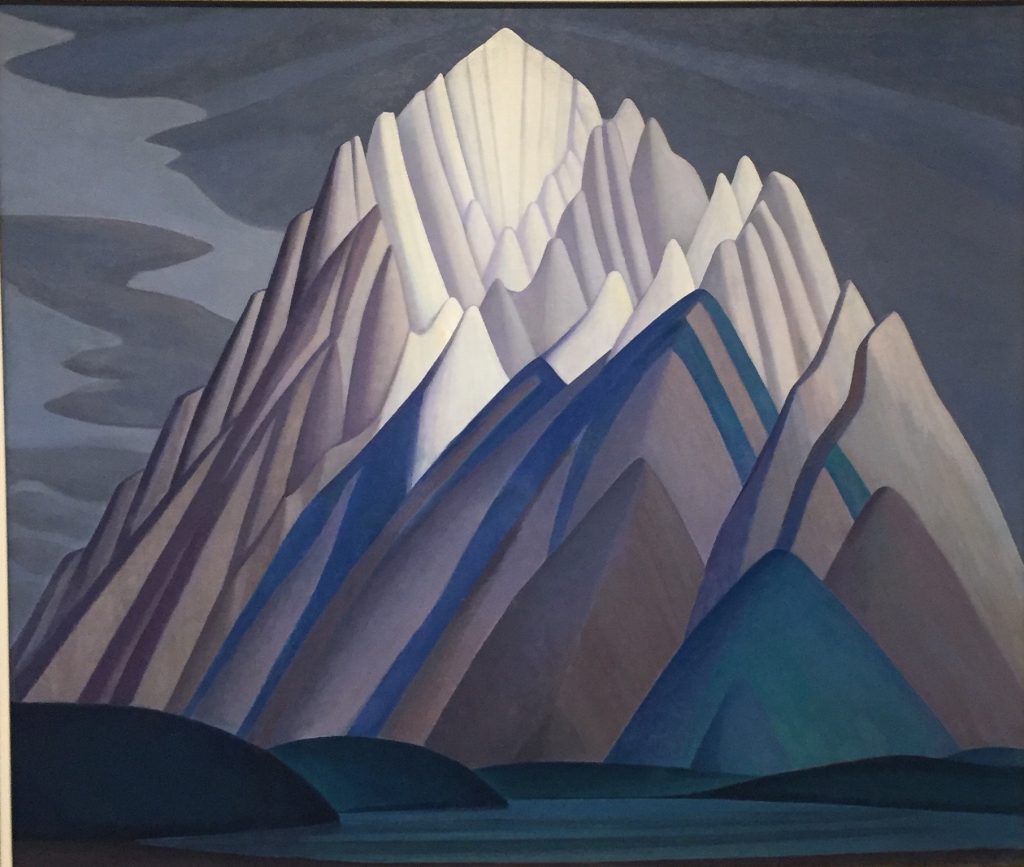The Idea of North

Mountain Forms, Lawren Harris
In Toronto this past weekend, I had a chance to see the Lawren Harris retrospective, a show that brings the work home from its previous exhibition at the Hammer Museum in Los Angeles. Curated by Steve Martin, the show does exactly what it set out to do: reveal the greatness of Harris’s achievement in the first two thirds of his career before he moved into a pure abstraction influenced by Kandinsky. The exhibition offered two visual feasts in one and gave me a more effective experience of Harris’s best work than any of the plodding documentaries about him available on line.
Harris became three different painters during the course of his career. In his first period, he was influenced by Post Impressionism, as well as Americans like Hopper and Burchfield, in his depiction of the rundown, industrial sections of Toronto called The Ward. In thickly-loaded and intensely colorful paint, he conveyed a kind of seasonal grace infused into what would otherwise have been squalid scenes of row houses and hazy factories. It’s tempting to rush through the rooms devoted to these paintings on the way to the paintings of the “North,” but Harris could have quit painting after doing these urban scenes and still be worthy of a retrospective. And yet the focus of the exhibit, his paintings of his imaginary “North” are even more powerful. He simplifies what he depicts, eliminating most detail and reshaping nature into geometric forms that convey energy and structure and light. The amazing thing is that they actually look natural, as if the planet had finally figured out how to get a mountain or an island exactly right. He somehow manages to capture the subtle play of actual daylight on almost completely imaginary forms. The effect is that you’re invited into a visually coherent world that feels both eternal and otherworldly and yet recognizable and arising out of some inner necessity that gave Harris his own idiosyncratic measure for accuracy in what he was doing—when he was only elaborating on sketches done from direct observation.
As it did for Burchfield, the idea of the “North” represents a spiritual state for Harris. In simplified representations of mountains, glaciers, lakes and sky, Harris found a way to balance abstraction with representation in a personal way. You can feel, in the paint itself, how much care went into every square inch of the canvas–Georgia O’Keefe comes to mind repeatedly, both in the simplified and abstract rendering of nature, but also in the deliberate care given to the quality of the paint on the surface. It’s hard to grasp how resonant and serene these images are in reproductions. These paintings are both absolutely still, completely at rest, and yet they radiate an intense, vital energy and clarity of mind.
Comments are currently closed.